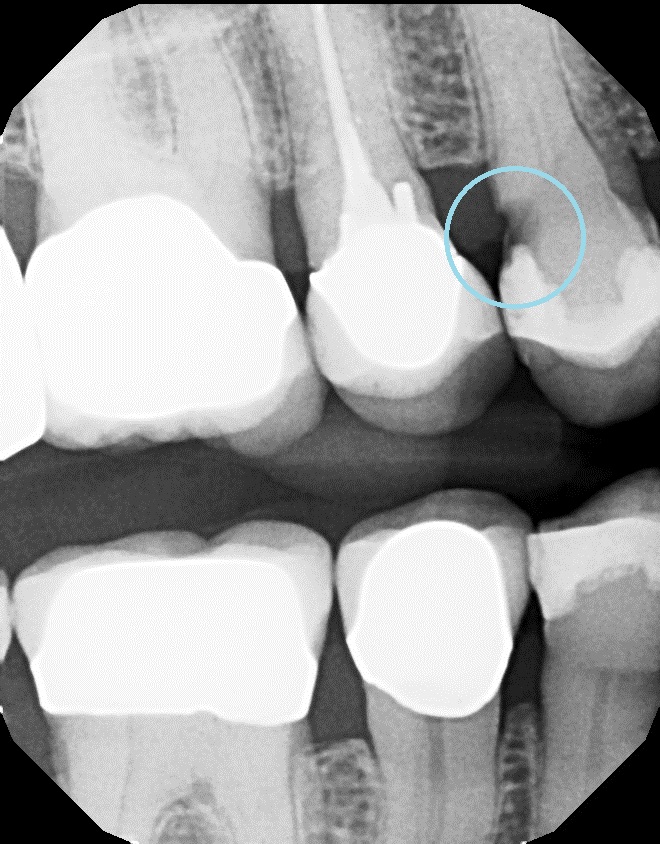Some people wonder why radiographs (x-rays) are a necessary part of dental appointments. Without X-rays, dental professionals can only see part of the teeth, as the sides and the roots are hidden from view. X-rays help provide a clearer view of your teeth. Digital x-ray images can also be enlarged and enhanced to provide more detail and easier viewing – by both you and your dentist.
Because many parts of the teeth cannot be seen by looking in the mouth, problems such as cavities can go unnoticed without the help of x-rays. A cavity that develops on the side of a tooth (where floss cleans) may not be visible until it is quite large. The larger a cavity grows before treatment, the more treatment the tooth may need. X-rays increase a dental professional’s ability to detect while they are small enough to fix with a simple filling. Waiting too long can lead to hearing the words “root canal”, which is usually not something people want to hear!
Dental x-rays are also needed for other purposes besides checking for cavities. Root canal treatment, checking for periodontal (gum) disease, evaluating if you are a candidate for dental implants and even looking for tumors or cysts require X-rays.
Root canal treatment is necessary when the nerve of the tooth is infected. These infections show up on x-rays as dark areas around the tip of the root. An x-ray can confirm the dentist’s diagnosis and can show the extent of damage. Sometimes x-rays are taken during the root canal treatment so the dentist can see if the full nerve canal has been accessed. Follow-up x-rays show the healing that takes place after treatment has been completed.
Dental x-rays are also useful in determining the extent of periodontal disease. X-rays can show the bone level, as well as heavy calculus (tartar) that is stuck to the teeth. Dentists and hygienists use a periodontal probe to measure how far under the gum the bone is. An x-ray can show the calculus that needs to be removed so the bone and gum can be free from disease. If there is a lot of space under the gum, it is called a “pocket”. X-rays after periodontal treatment help dental professionals check that all of the deposits have been removed from the pockets and allow them to monitor the bone level to ensure changes are addressed quickly for the best results.
Dentists utilize several diagnostic methods when assessing patient needs. X-rays are simply one of those methods. Think of a doctor’s appointment: you expect your doctor to take your blood pressure, listen to your heart, and process your blood work – you would be appalled if your doctor simply looked at you without using any of these diagnostic tools. Dentists use diagnostic tools, such as x-rays, to provide the best standard of care possible.
Some people are concerned with the radiation from dental x-rays, but with the advent of digital radiography, the amount of radiation from dental x-rays has decreased by 60-70 percent from traditional film radiographs. A half day outside in the sun exposes you to as much radiation as a full set of digital dental x-rays.
It is recommended that a new patient have a full series of x-rays taken to establish a base-line for care and unveil any existing problems. The number of x-rays needed will vary patient-to-patient. Dr Berry will prescribe the minimal number of x-rays necessary for a thorough examination of your mouth.



